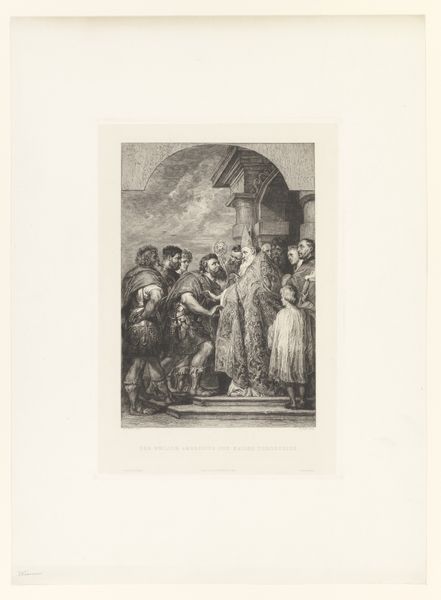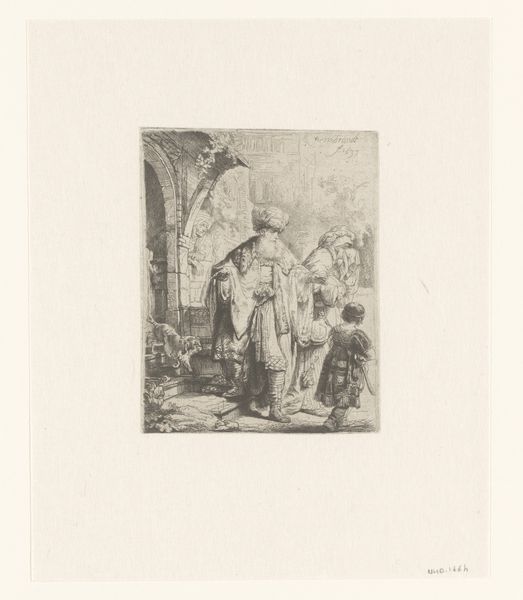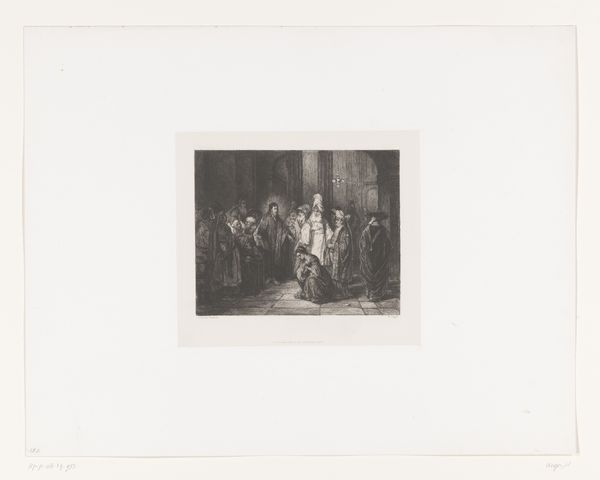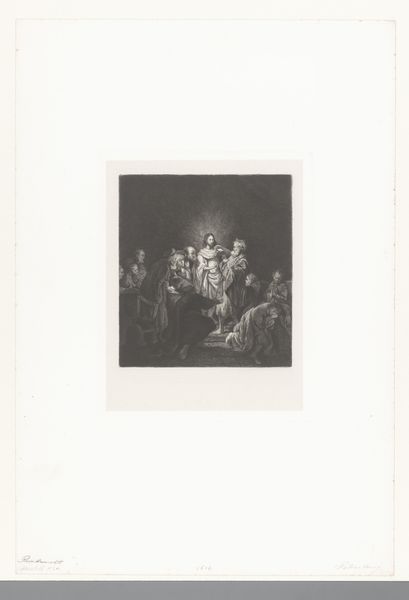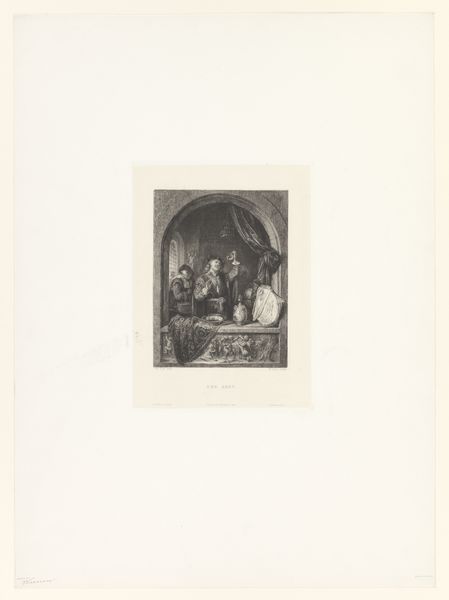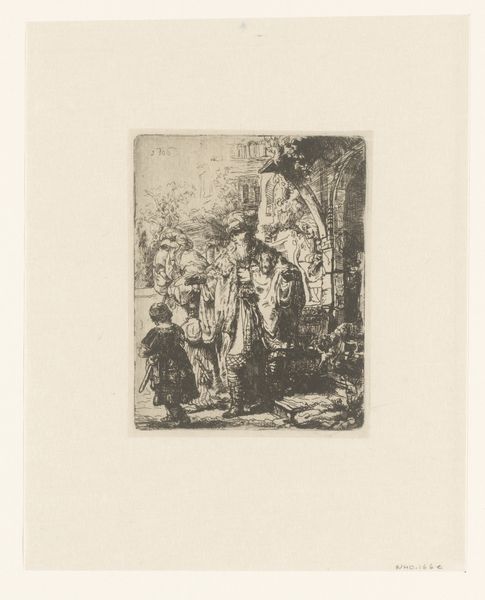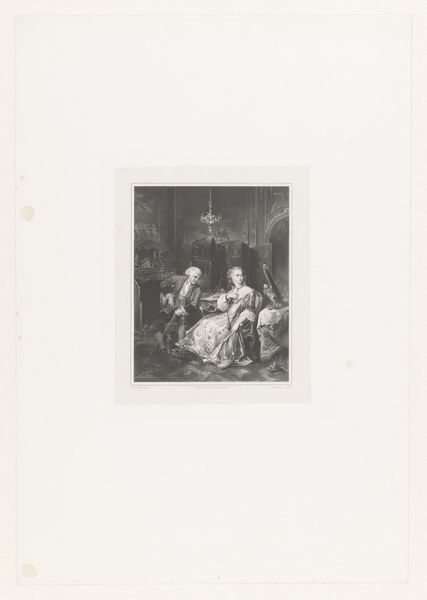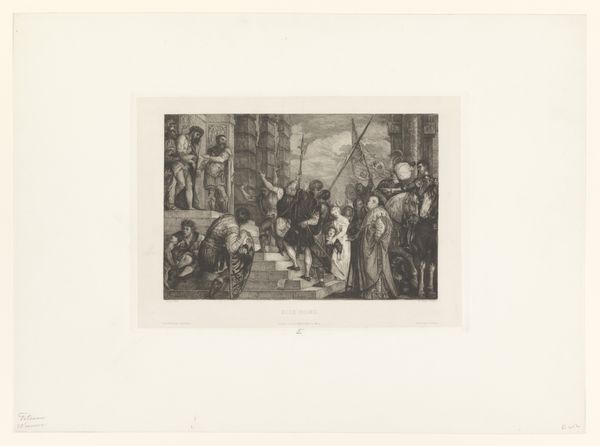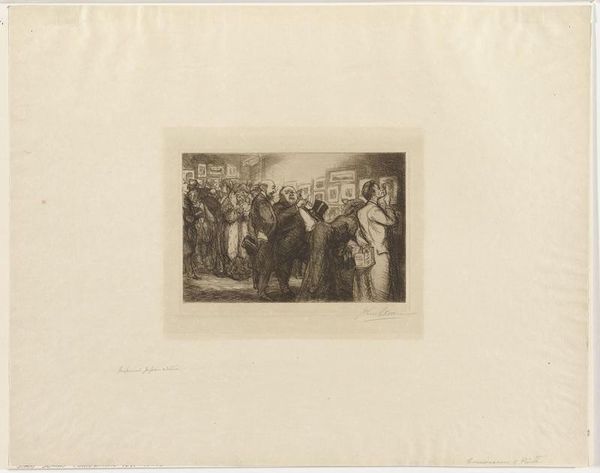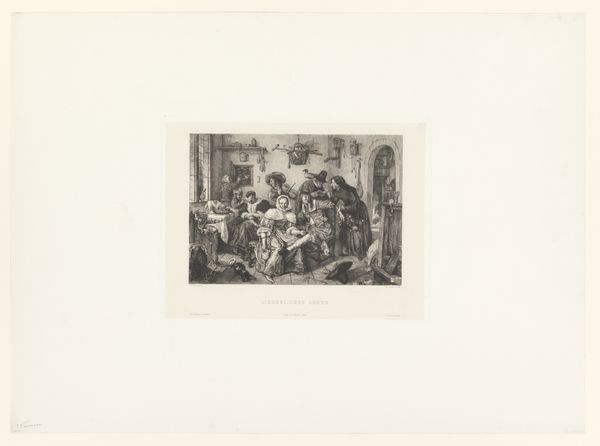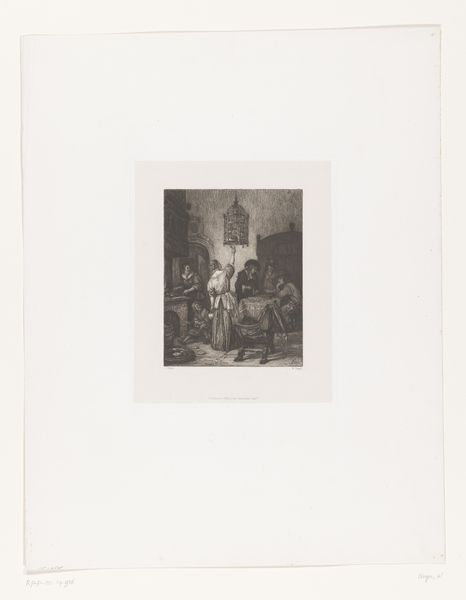
drawing, print, paper, engraving
#
drawing
#
medieval
#
narrative-art
# print
#
old engraving style
#
figuration
#
paper
#
line
#
history-painting
#
academic-art
#
engraving
Dimensions: height 100 mm, width 142 mm
Copyright: Rijks Museum: Open Domain
Curator: Here we have a print entitled "Mis in de open lucht naast een kerk," which translates to "Mass in the Open Air Near a Church," dating roughly from 1800 to 1900, and it's attributed to Eduard Ade. Editor: It’s fascinating! At first glance, I’m struck by the rigid solemnity. It gives me the impression of the performance of religious authority, perhaps a time where social and political power was visibly intertwined with spiritual ritual. Curator: Absolutely. Looking through the lens of cultural history, these kinds of images depicting public ceremonies helped to legitimize established power structures. Print media was becoming increasingly accessible at this time. Consider how distribution could reinforce particular notions of faith, nationhood, or cultural values. Editor: Indeed. The artist chose engraving as their medium and that brings up interesting questions of accessibility and dissemination of such imagery to the broader public. But let’s dig a bit deeper into the socio-political implications of staging religious rituals in public? Who does this serve, and who is left out? Curator: The spatial arrangement tells a story too, doesn't it? The central figure with outstretched hands clearly orchestrates power, but let's also observe how women are kneeling below at his feet, and their relationship to the presumed spirituality in comparison with the clergymen around him. Editor: Right, thinking about how the performance of faith intersects with identity is so important here. Perhaps, from a feminist theory standpoint, the engraving portrays faith as passively received rather than actively participated by all in this socio-cultural environment? Curator: These details really prompt one to question the nature of belief and what role public rituals have on solidifying societal roles. I’m always interested in how such images not only reflected but actively shaped contemporary understandings. Editor: Examining visual rhetoric through the politics of imagery and representation is key to acknowledging the image's lasting resonance and impact through an intersectional and historical approach. I appreciate how unpacking these scenes can reveal more about identity and power dynamics of their time.
Comments
No comments
Be the first to comment and join the conversation on the ultimate creative platform.
